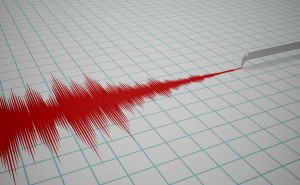
|
利安科技股份有限公司 新北市汐止區康寧街169巷23號7樓之一 公司電話:+886-2-26958906
|
|
Seismic Detection / 地震探測The improvement of the accelerometers’ performance opens the possibility to compete with standard seismometers. The concept is to install high precision accelerometers near seismic zones, generally located occurs at the borders of two tectonic plates. The interval of time between an earthquake and a local alert can be very small, from one minute to a few seconds. The waves travel through the ground at 1 to 5 kilometers each second, whereas the signals emitted by the sensors reach the urban areas almost instantly. This allows the population to execute the security processes in time, as long as they are not into the blind zone.

Configuration of the SystemIn order to optimize the chance of detecting an earthquake, the accelerometers are generally installed at a constant distance from each other. The use of relays can be a good solution to reduce radio consumption. Two vibration sensors installed in the x and y axis are required for P-waves detection, as they propagate parallel to the ground. On the other hand, three accelerometers are needed for S-waves detection, as they propagate perpendicular to the surface . Conditions needed
The most important point is to read the low amplitude, low frequency vibrations
with net accuracy. The Advanced National Seismic Systems (ANSS) are divided into
3 classes: The propagation frequency of a seismic wave varies from 0 to 10 Hz: it mostly depends whether it is a P-wave or a S-wave. Its amplitude on the ground doesn’t exceed 1g: the sensors with low ranges are favored for this application. The MEMS accelerometers
A MEMS accelerometer functions thanks to the displacement of electrostatic
charges on the surface of two fixed electrodes. An acceleration impacts a mobile
mass within the die, creating a voltage difference. MEMS accelerometers read low
frequency vibrations, from continuous voltage (DC 0 Hz) to 1000 Hz. The servo-accelerometers are high performance, yet expensive sensors. They function in a closed-loop configuration, which allows them to reach Class A and Class B requirements. The VS1000 Series
With a noise density down to 7 µg/√Hz for a recommended range of ±2g, the VS1000 is
currently the best vibration sensor that Colibrys can offer. Its dynamic range
reaches 90 dB for a bandwidth of 20 Hz, respecting the precision requirements
imposed by the Class C. The sensor has a non-linearity coefficient of 0.1% FS,
with a bandwidth from DC 0 Hz to 2500 Hz (at ±5% FS) |
|
公司電話:+886-2-26958906 上次更新日期: 2022年08月03日。 |